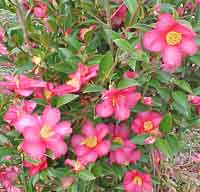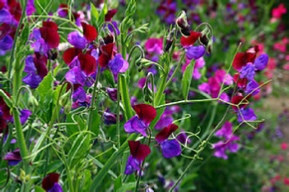DECEMBER: THE MONTH TO ENJOY THE HOLIDAYS
Make dried arrangements with the fruit of the native Sumac. You can find it along roads. It is a small tree. Cut the fruit from the top and use it in arrangements.
Plant Hollies in your landscape. Not only can you use the berries for decoration, but it is good food and protection for the birds in the winter.
Observe your yard. It is easier to see what needs improving when your yard is dormant.
Check sales at nurseries on the last of the bulbs. You can buy them and layer in pots or put them in the garden.
Shrubs and trees can still be planted.
Put up hoses and cut off water before a hard freeze.
When your Christmas Cactus starts blooming, put it in bright light and reduce water to keep it blooming longer.
To keep pansies blooming continue to deadhead and fertilize with a liquid fertilizer.
If we have warm spells this month, bulbs will start to sprout so cover the leaves with pinestraw.
Water new plantings when dry. Do not forget Camellias and Daphnes, they need the extra water to bloom.
Plants in bloom are Lenten Roses, Camellias, Iris unguicularis, Crocus imperatii (De Jager) and the end of the month until spring Primus mume - Japanese Flowering Apricot.
Average temperature is 67°F to 54°F.
Bird Tip: Remember the birds by keeping your birdfeeder cleaned out and then restock it with fresh food.
Sumac: The time to make the identification is in the fall, when the berries have ripened to maturity. The poison sumac tree has white berries in autumn, and the berries hang down. Non-poisonous sumac trees bear red berries in the autumn, and their berries grow upright.

JANUARY: THE MONTH TO PLAN A GARDEN
Study catalogs for seeds and unusual plants.
Force branches of early flowering shrubs in a sunny window.
Continue to fertilize Pansies and feed the birds. (Pansy fertilizer should be liquid with a high middle number.) Keep snow off of shrubbery. Also check where snow melts first in your yard to help you determine your microclimates.
You may still plant perennials, trees, and shrubs. Plant Sweet Peas (Lathyrus odoratus); they need cold temperatures to germinate - about 55°F. Nick the seeds or soak in water overnight. Seeds also need darkness to germinate.
Plants should flower between April and May.
Cover Camellias and Gardenias at night if temperatures drop below 20°F.
Feed boxwoods with cottonwood meal.
Sow Bachelor's Button, Larkspur, and Poppy seeds. Apply manure, compost, and lime to vegetables beds. Plants in bloom are Lenten Roses, Camellias, Daphne, Sweetbox, and Winter Jasmine.
Average temperature is 31°F to 50°F.
Bird Tip: If you have the space, use your Christmas tree (real ones) as a thicket for the birds. Put it in your yard upright or lay it down. Birds will hide in it or nest in it.

FEBRUARY: THE MONTH TO PRUNE
Cut back ornamental grasses and liriope.
Begin dormant pruning of trees and shrubs.
Remove fallen Camellia blooms to prevent disease.
Prune Roses, except for early bloomers like Lady Banks or ramblers.
Prune plants that bloom on new wood (Butterfly bushes), Annabelle or Peegee Hydrangeas, and Crepe Myrtle.
Plant a tree for Arbor Day.
Fertilize fruit trees with 15-15-15.
Fertilize Iris Valentine's Day and Halloween.
Fertilize Peonies with wood ashes and/or copper sulfate.
Plant Asparagus, English Peas, and Garlic.
Plants in bloom are Crocus, Daffodils, Spirea, Forsythia, Winter Honeysuckle, and Quince.
Average temperature is 34°F to 55°F.
Bird Tip: Ground covers, such as Ajuga and Pachysandra, offer protection from predators year round.

(Horticultural and bird tips are provided by member Kathy Kennedy.)